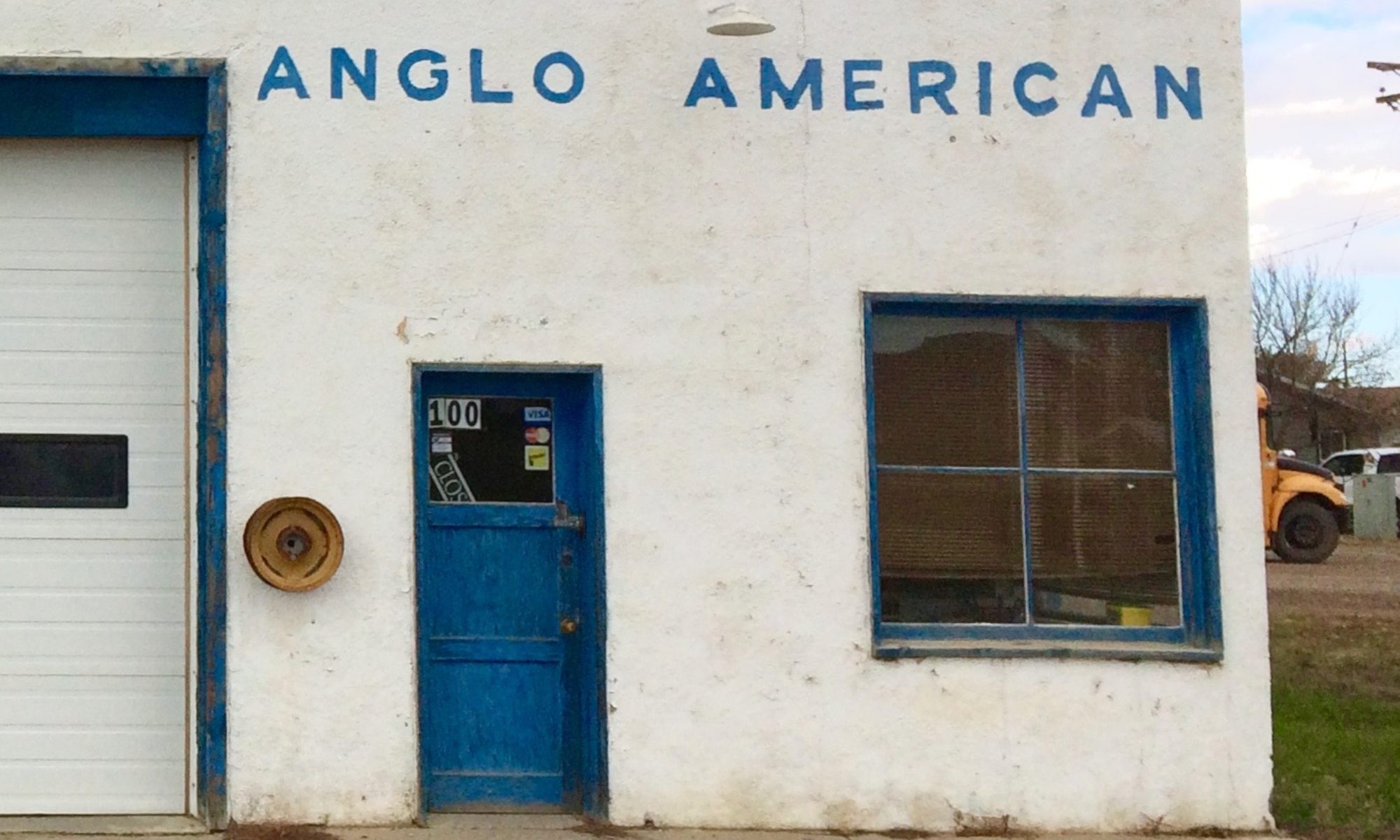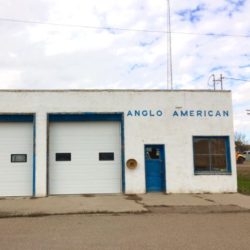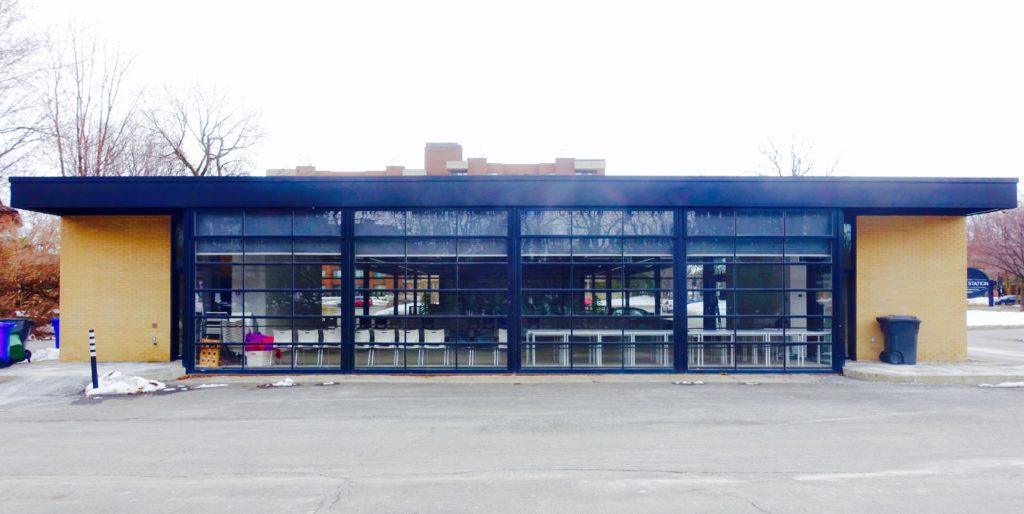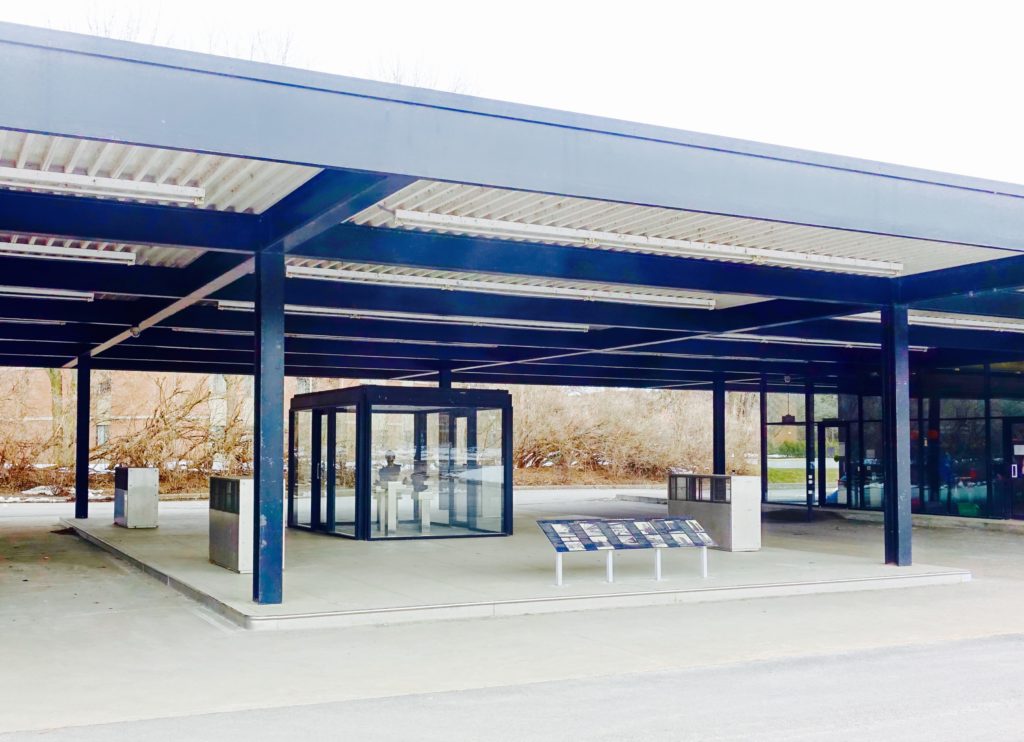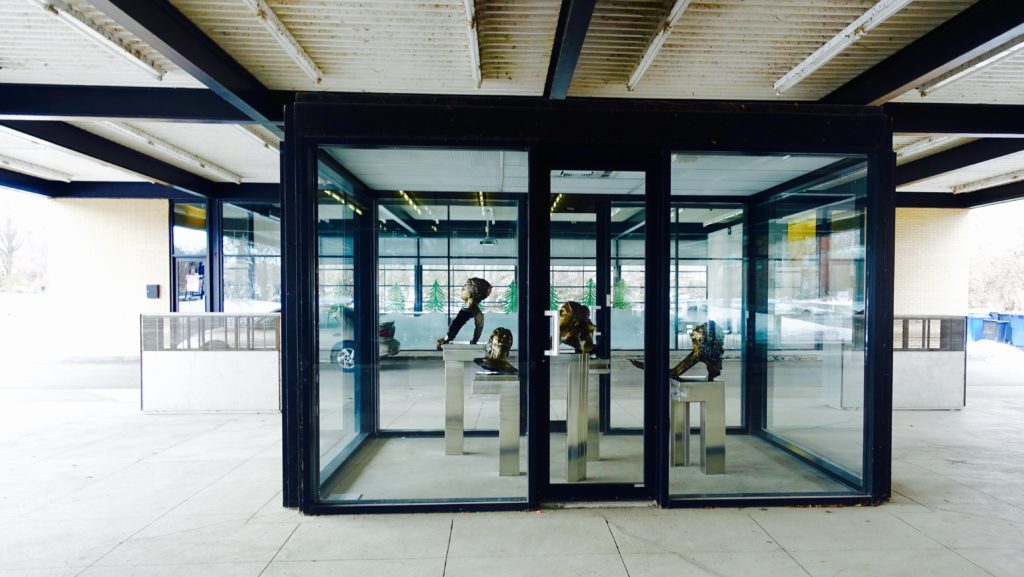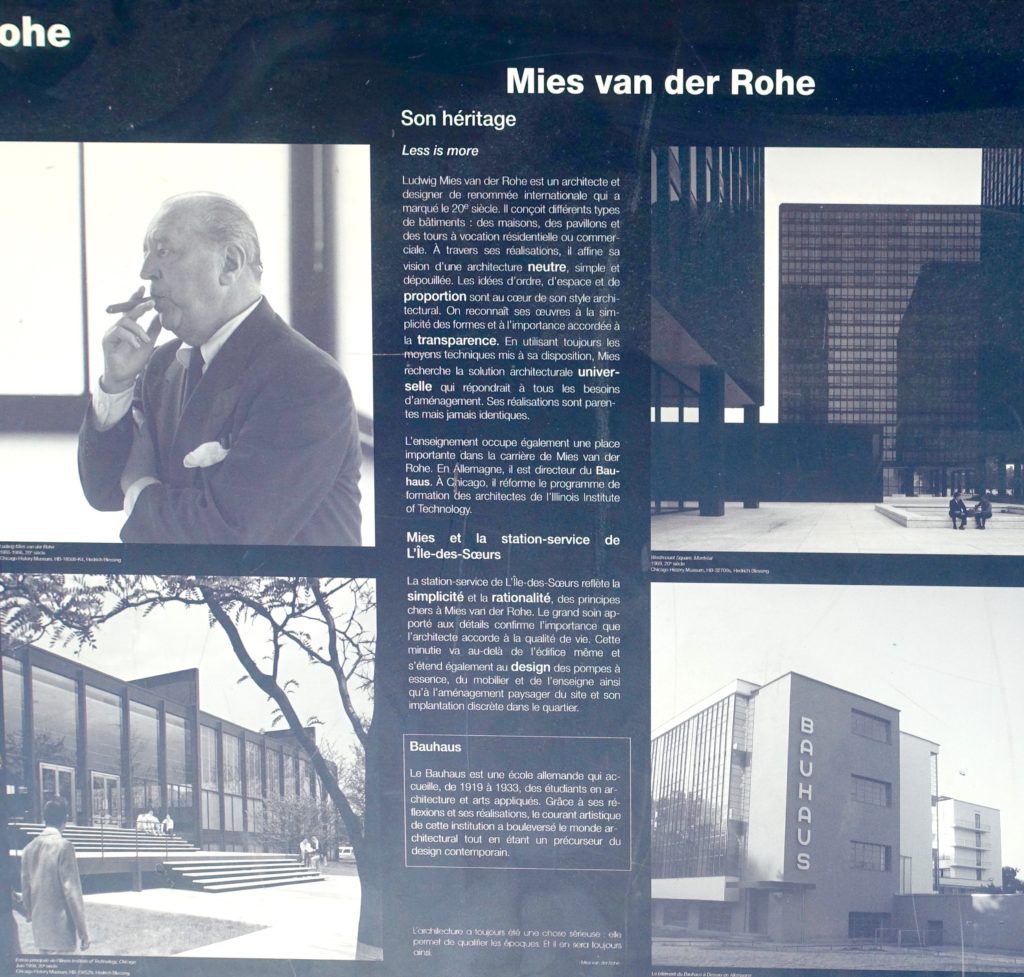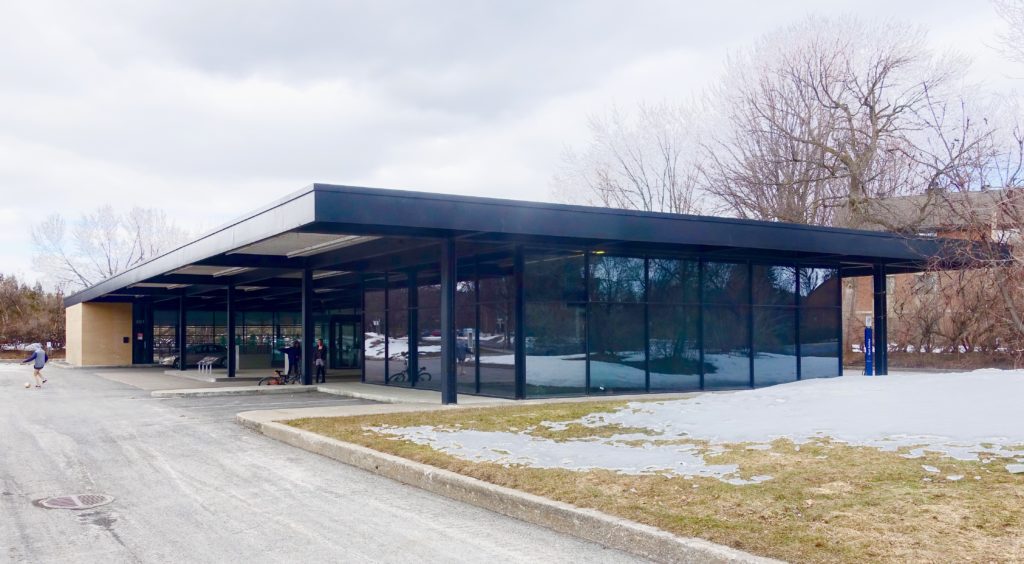
This service station was designed by Mies van der Rohe for ESSO in 1967 – 1968. It is located on l’ile des Soeurs in Montreal. The station closed in 2008 and was converted three years later to an ‘intergenerational community centre’. The renovation/restoration project was led by the architectural firm FABG in Montreal. Much care was been taken with the recent project, to maintain the spirit of Mies’s original aesthetic. A series of exterior information panels have been added that provide some background and history on Mies, and the project itself.
At university in the 1990’s, I wrote a short essay on Japonism that included a comparison of the design aesthetics of the Katsura Detached Palace in Kyoto to those of Mies van der Rohe – with both there is an alignment of simplicity, idealized harmonious proportions, and the attention to, and expression of detail. In both cases there is a quiet stability in the design of elements, which are arranged in balanced asymmetrical compositions. Two obvious contrasts between Mies and the japanese palace are that of materiality (modern industrial steel and glass vs natural wood and paper) and the variations in the colour palettes.
The photos with this post were taken on the afternoon of March 24th, a grey Saturday. The raw digital files provided images that were dull and sombre. Beyond the typical adjustments of cropping, fine tuning exposure and contrast, here the colour saturation has been turned up and in some cases a filter added.
The top portion of the panel here explains;
Mies van der Rohe – Son héritage
Less is more
Ludvig Mies Van der Rohe est une architecte et designer de renommée internationale qui a marqué le 20ieme siècle. Il conçoit différents types de bâtiments, des maisons, des pavillons et des tours à vocation résidentielle ou commerciales. A travers ses réalisations, il affine sa vision d’une architecture neutre, simple et dépouillée. Les idées d’ordre, d’espace et de proportion, sont au coeur de son style architectural. On reconnaît ses oeuvres à la simplicité des formes et à l’importance accodée a la transparance. En utilisant les moyen techniques mis à sa disposition, Mies recherche la solution architecturale universelle qui repondrait à tous les besoins d’amènagement. Ses réalisations sont parentes mais jamais identiques
*****
